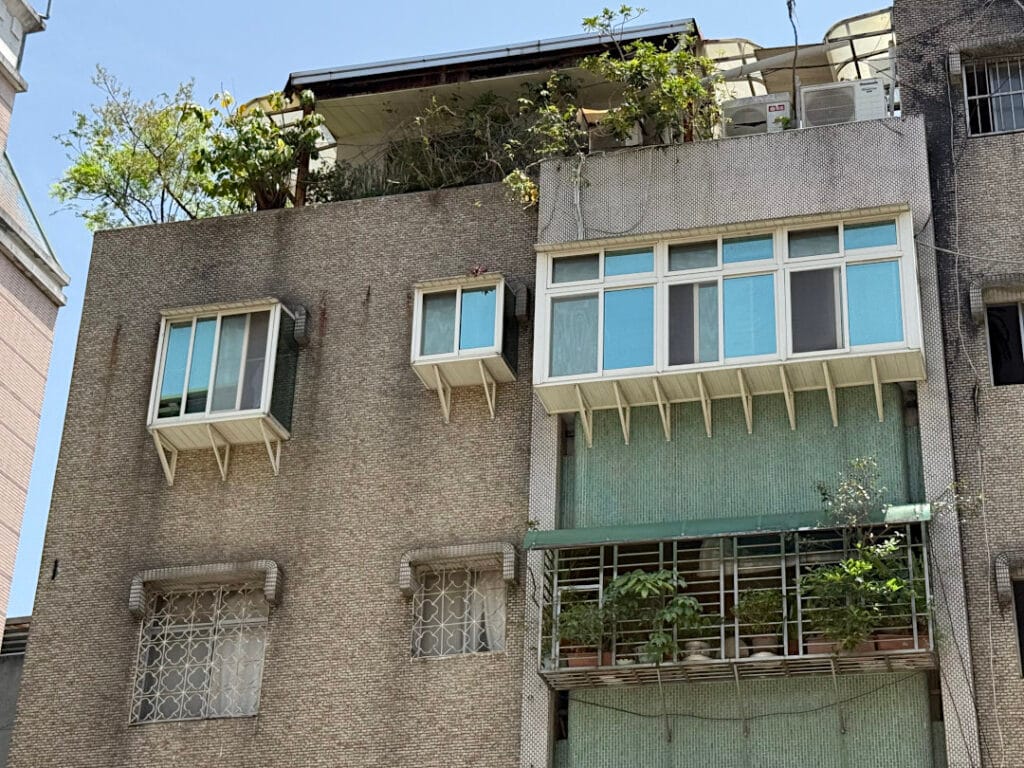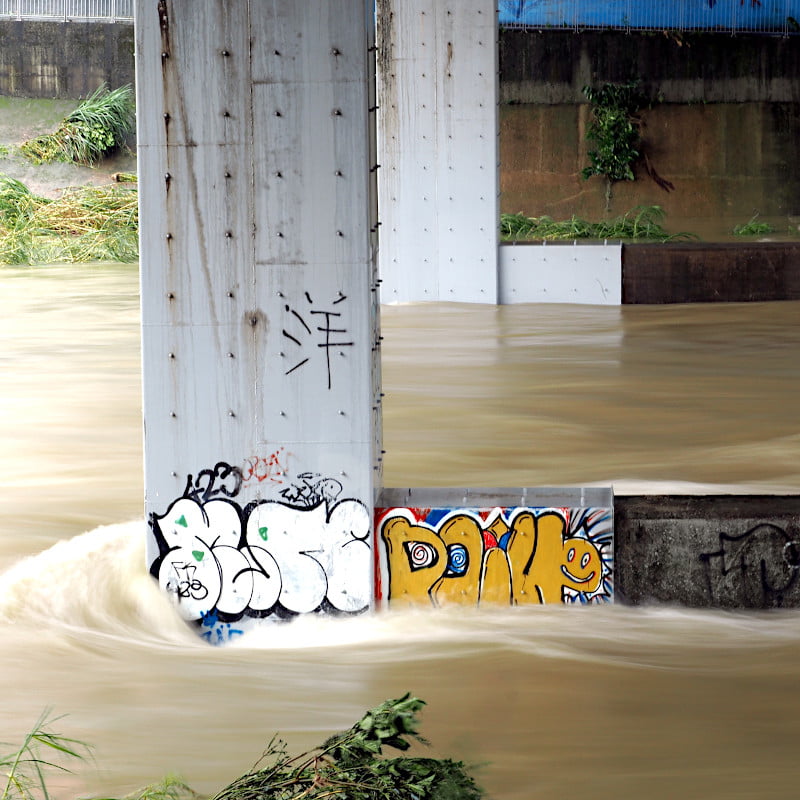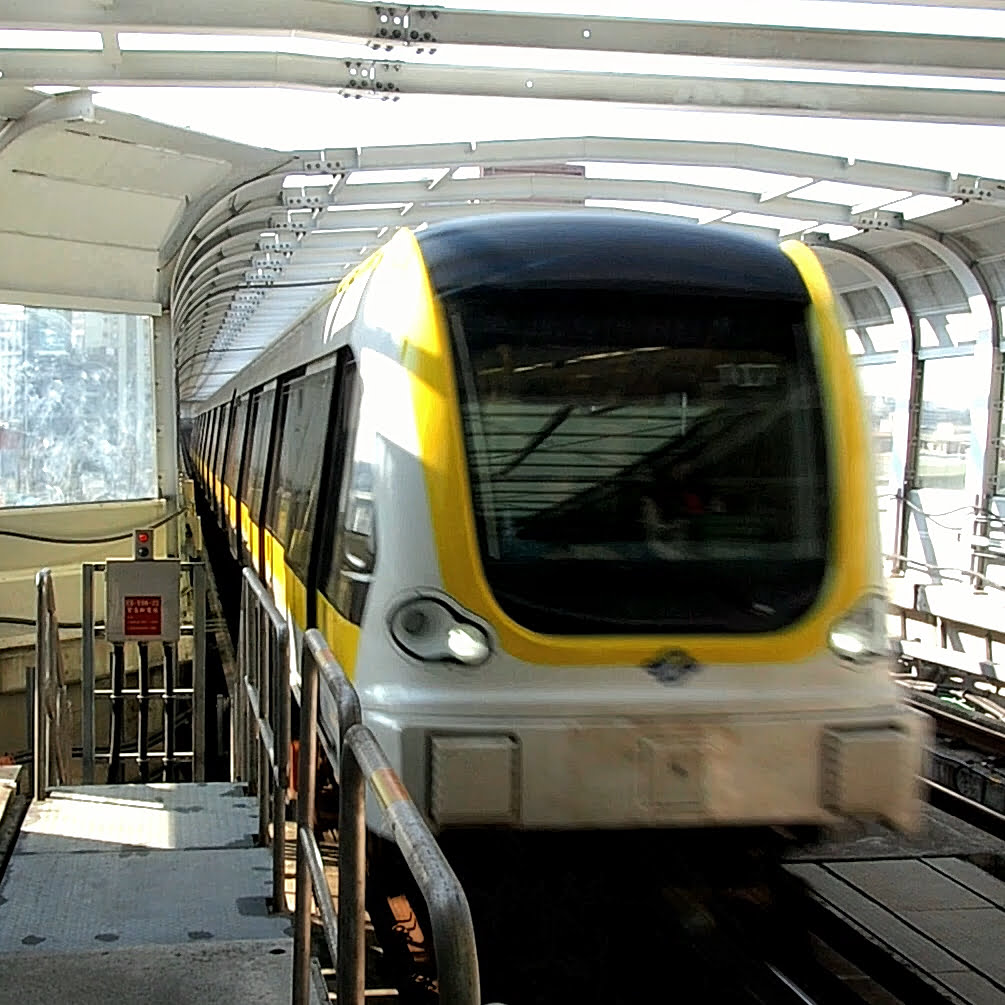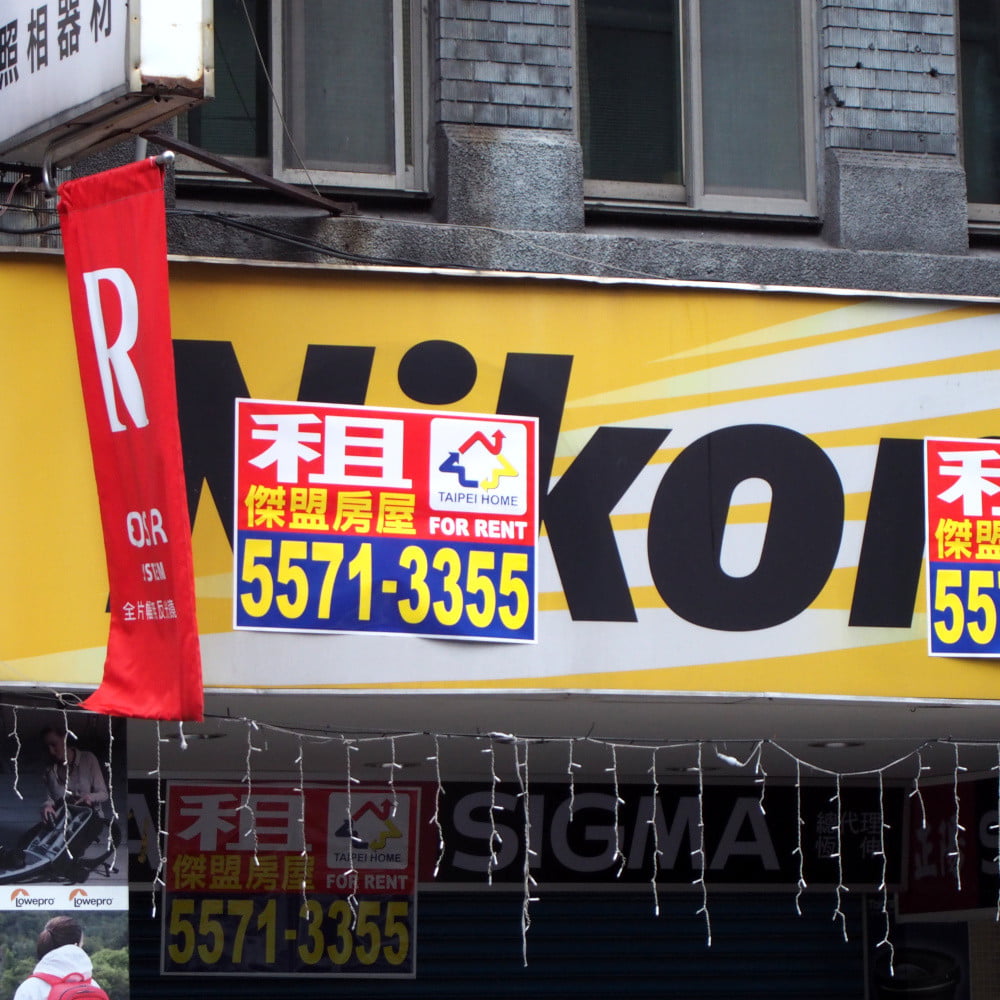When you’re in Taiwan, you’ll quickly notice that many older buildings have their windows and balconies enclosed by metal bars – often forming cage-like structures. In Chinese, they are also called 鐵窗 (tiěchuāng), which literally means “iron windows.” While it makes sense to protect ground-level windows and doors from break-ins, you’ll see these bars even on higher floors – the second, third, all the way up to the tenth floor or more.
And you might wonder: why? What’s the point of having burglar bars on the tenth floor?

First Impressions: Typhoon Protection?
When I first came to Taiwan over a decade ago, I asked myself the same question.
My first guess was that they might offer protection during typhoons. I imagined that flying debris or larger objects could be hurled through the air and smash windows. But after many years in Taiwan – and experiencing quite a few typhoons – I realized that while typhoons can be very strong, they don’t usually send large objects flying high into the air. At least not in urban areas. I’ve never seen it happen, and I’ve never heard of cases where windows on higher floors were shattered this way.
Also, new buildings usually don’t have burglar bars. In fact, in many cases, they’re not even allowed due to aesthetic regulations. If the bars were really for typhoon protection, we would expect new buildings to have them too. So that doesn’t seem to be the main reason.
Fear of Crime: A Reaction to 1980s Burglary Waves
After doing some research online and talking to locals, I found several plausible explanations.
Back in the late 1980s, Taiwan experienced a wave of burglaries. Some reports suggest that thieves even managed to access rooftops and rappel down to enter apartments through windows on higher floors. It’s worth noting that window design in Taiwan is often quite basic – many windows can be opened easily from the outside. Whether these rooftop break-ins were common or not, the media likely sensationalized the topic, creating fear and prompting widespread installation of burglar bars.

Safety From Falls – Human and Animal
Another reason could be the exact opposite of burglar protection: preventing people from falling out. There have been tragic incidents where children opened windows while playing and accidentally fell. And sadly, there have also been cases of people deliberately falling from windows. These events may have contributed to the popularity of window bars as a safety feature.
For pet owners, they also offer peace of mind. I know several people who keep cats or small dogs and use the bars to prevent their pets from falling or jumping out of open windows.
Everyday Use: Plants, Laundry, and More Space
Then there’s the practical side. I’ve lived in several homes with these bars, and they often serve more than one purpose. Many extend outward around the window frames or balconies, creating additional usable space – perfect for placing potted plants or hanging clothes to dry. Some designs are quite thoughtful and resemble small alcoves. In fact, some buildings even have proper structural extensions instead of bars. One family I know transformed their enclosed balcony into a cozy extension of their living room – almost like a small winter garden.

Secure Storage on the Balcony
Another often-overlooked reason is storage. Many balconies are used to store household items like bicycles, gas canisters, or even appliances such as washing machines or fridges. The bars make these items feel more secure, especially when balconies face the street or an alley.

Privacy in High-Density Neighborhoods
In dense urban areas, these cages also add a layer of privacy. With buildings so close together, it’s not unusual to have neighbors just a few meters away. The bars help shield balconies and windows from view and reduce the chance of things being thrown or dropped between apartments.
A Cultural Habit That Became the Norm
There’s also a cultural aspect. During the 80s and 90s, installing these bars became a kind of trend – or even a social norm. Families saw them as essential, even if the actual risk was low. It became a habit passed down through generations, much like screen doors in the West – standard, expected, and rarely questioned.
More Than One Reason – And a Hidden Danger
Over time, I’ve come to think there’s no single answer. It’s likely a mix of practical concerns, safety habits, and social conventions. At some point, burglar bars simply became the default. People started installing them not necessarily out of need, but because that’s what everyone else did – or because they assumed it was standard.
But it’s good to see that they’re slowly disappearing. There is also a darker side to them. House fires are unfortunately not uncommon in Taiwan, and these bars can become deadly traps. In several cases, people couldn’t escape because they were locked in by the bars, and firefighters were delayed in entering the building.
A Defining Feature of Taiwan’s Urban Landscape
And while their popularity is slowly fading – especially in newer buildings – they’ve left a lasting mark. These iron bars and balcony cages have become an iconic part of Taiwan’s urban landscape. They’re more than just a safety feature. For many of us, they’re part of what a building should look like in Taiwan. It’s hard to imagine older city neighborhoods without them.
Enjoyed this article? You can get early access to my maps, blog posts, and exclusive content by becoming a supporter on Ko-fi. I also share updates and insights on Facebook, post photography and snapshots on Instagram (@eyes_on_taiwan), and showcase maps and Taiwan data on Instagram (@taiwan.maps.dataviz). You’ll also find me on Threads and Bluesky, where I share new maps and links to blog articles. Looking forward to connecting with you!
If you like this content and don’t want to miss new blog posts, consider subscribing to our newsletter!




Very good analysis. I moved to Taiwan in 1973 and there were few window bars, and few apartments, the highest was 3 stories. Then thieves could get in. But after 1999 there is no real need in most cases. Just habits like wearing a mask. We put them on our second floor of a 12 story in Hsinchu, no reason just everyone does it.
It is a helpful analysis, thanks for the information. Next time, might also be nice to add some personal stylistic touches so it doesn’t read like a ChatGPT-generated article. Happy writing~
Thank you for your comment. Why do you think it was generated by ChatGPT? This whole article is my idea and was written by me. English is not my mother tongue, so it is not easy for me to express myself in a way a native speaker would do.
haha. maybe yi dian dian mean